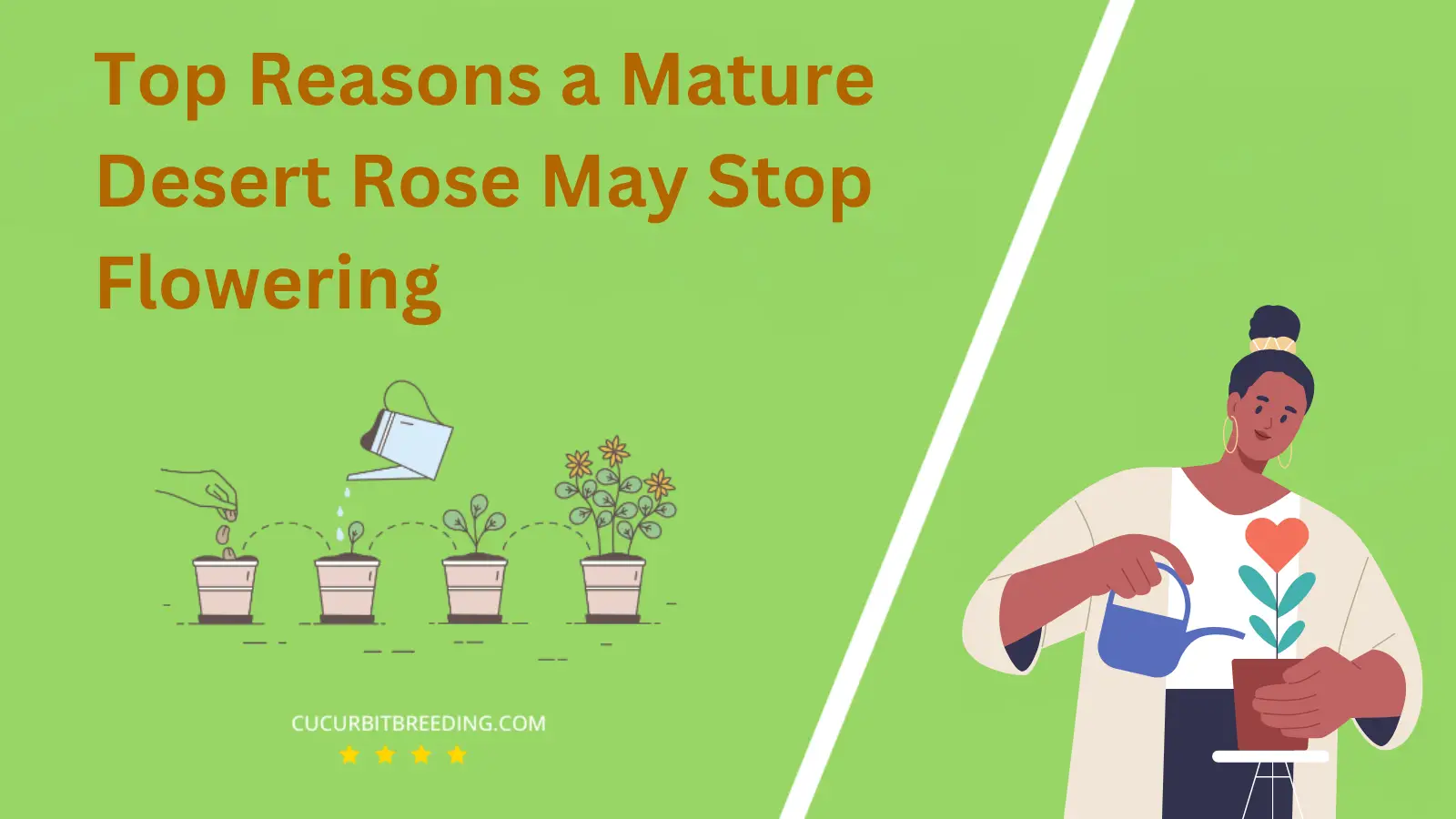
Have you ever wondered, when does a desert rose bloom? This unique plant, with its vibrant flowers and thick, fleshy stem, is an enigma of the botanical world.
Thriving in arid conditions, the desert rose is a testament to nature’s resilience and adaptability. Let’s delve into the captivating life cycle of this stunning flora.
When Does A Desert Rose Bloom?
The Desert Rose, also known as Adenium obesum, typically blooms in the late spring and throughout the summer. However, with proper care and optimal conditions, it can bloom multiple times a year, and in some climates, it can even bloom year-round.
| Stage | Description |
|---|---|
| Germination | Spring (March-April) |
| Growth | Spring (March – June) |
| Blooming | Spring (March-June) |
| Dormancy | (Dormancy Period: December – February) |
How Long Do A Desert Rose Bloom?
A Desert Rose bloom typically lasts for several weeks. However, the blooming period can extend up to several months if the plant is in optimal conditions. The blooming season usually starts in late spring and continues through the summer. It is important to note that Desert Roses may not bloom if they do not receive enough sunlight or if they are overwatered.
How Light Affects A Desert Rose Blooms?
The light greatly influences the blooming of a Desert Rose plant. Desert Roses require full sun exposure for at least six hours a day to bloom fully. This strong light intensity encourages the plant to produce more blooms and enhances the vibrancy of the flower color.
However, extreme heat and light can also cause damage. If the plant is exposed to intense sunlight without any shade, the leaves can get sunburned, resulting in brown spots and wilting. It’s a balancing act of providing enough light for blooming, but not so much that it causes damage.
Indoor Desert Roses should be placed near a south-facing window to get enough light. Supplemental light may be necessary during the winter months when the days are shorter and the light intensity is weaker. Without adequate light, Desert Roses may not bloom or may produce fewer flowers.
Will a Desert Rose Bloom in the First Year You Plant It?
The Desert Rose plant, scientifically known as Adenium obesum, typically does not bloom in its first year of planting. This is primarily due to the fact that it’s a slow-growing plant that needs to mature before it can produce flowers. Generally, a Desert Rose will start to bloom when it’s approximately three years old. However, this can vary depending on factors like environmental conditions and care practices.
Will A Desert Rose Bloom Every Year?
A Desert Rose, scientifically known as Adenium obesum, is a beautiful flowering plant that blooms annually. However, its blooming is influenced by the quality of care it receives. If properly cared for with optimal light, temperature, water, and fertilizer, a Desert Rose can indeed bloom every year. On the other hand, if these conditions aren’t met, the plant’s blooming might be hindered. So, while the Desert Rose has the potential to bloom annually, it is contingent on the care and environment provided.

Should I Deadhead A Desert Rose Blooms?
Yes, you should deadhead a Desert Rose to promote more blooming. Deadheading, which is the process of removing wilted or spent blooms, helps to redirect the plant’s energy towards producing new blooms. For the Desert Rose, using a sharp, sterilized tool, cut just below the faded bloom. Be careful not to damage any nearby buds or leaves. This will keep your plant looking tidy and encourage more vibrant blooms throughout the season.
Top Reasons a Mature Desert Rose May Stop Flowering

A mature Desert Rose may stop flowering due to several reasons. Insufficient light is a common cause as these plants require full sun to bloom. If kept in shade or indoors, they may not receive the light they need.
Another contributing factor is improper watering. Desert Roses prefer their soil to dry out completely between waterings. Overwatering or underwatering can stress the plant, causing it to stop flowering.
Incorrect fertilization can also lead to non-flowering. These plants require a high phosphorus fertilizer to support their blooming process. If the fertilizer lacks this, the plant may not produce flowers.
Lastly, temperature plays a crucial role. Desert Roses thrive in warm conditions and can cease blooming in cold temperatures. They may also stop flowering if they’re exposed to temperatures below 50 degrees Fahrenheit for extended periods.